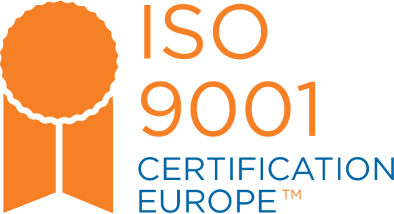This article was reproduced from a detailed project write up written by Niall Moran of Microsoft. His full technical article can be found here - https://microsoft.github.io/techcasestudies/iot/2016/10/28/CrokePark.html
The project
Boasting a capacity for 82,300 people, Ireland’s Croke Park stadium is one of the largest stadiums in Europe. As the national home to the Gaelic games and headquarters of the Gaelic Athletic Association (GAA), it hosts numerous high-profile international sporting, cultural, and music events. And now, within this urban test-bed infrastructure, lies the perfect Internet of Things (IoT) microcosm: a true “smart stadium.”
The Croke Park Smart Stadium project is a collaboration between GAA, Dublin City University (DCU), Intel, and Microsoft to advance innovation around IoT. Intel has strategically positioned sensors and gateways throughout the stadium to enable a range of environmental monitoring, safety, and fan experience use cases. These edge gateways compute and communicate with the sensors, collecting enormous amounts of diverse types of data and storing them on the Microsoft Azure cloud platform.
For the Intel ‘IoT’ Group Technical Marketing Team, the “Croke Park Project is an engineers’ test-bed for deploying an E2E IoT system to enable solutions, but more importantly understand the practical realities of what it takes to go into a third-party uncontrolled environment and deploy a bolt-on IoT system that includes sensors, IT equipment, gateways, communications, and interfaces onto existing infrastructure.”
Researchers at DCU are using the Azure IoT Suite to analyze that data, in the process creating dashboards that provide stadium management with real, actionable insights. These insights have provided Croke Park with information and opportunities to improve audience and fan engagement, foster better relations with the local community, reduce the carbon footprint, and ensure a safe experience on some of their tourist attractions while driving efficiencies and cost-effective stadium management. For DCU researchers, the opportunity to gather data from a variety of sensors within the IoT framework in a live environment over long periods of time is an exciting and unique platform for advancing research in data analytics.
Laura Clifford, Commercial Development and Engagement, Research & Enterprise Hub, Dublin City University, led the effort to help interested companies learn about and participate in the project. “We’ve had more than 30 companies actively involved with us in understanding how they could potentially deploy their pre-commercial IoT technologies here at Croke Park,” she said.
Business Case
One objective of the Croke Park project was to learn about the problems installing and maintaining IoT technology in densely crowded urban environments, but another was to realize how this technology could be deployed to solve real business challenges. With this goal in mind, the research team worked closely with GAA employees to align the technology solution with use cases that could offer business value to the organization.
Sound pollution
An important step in building strong community relations is ensuring that Croke Park is a good neighbor with events that have a minimal impact on those who live nearby. A key dimension of this is environmental sound monitoring. When it comes to decibels, Croke Park must stay within the parameters established by Dublin City Council. Before the Smart Stadium initiative, an independent third party would record the average noise levels and let the stadium know after the fact whether it was in compliance. Now this monitoring is also done in real time from preselected, fixed locations.
An automated solution to this problem solves a number of issues for the GAA:
- Reduced overhead in sound monitoring. The pre-existing solution is very manual and requires significant effort throughout a concert to record results. The automated microphones are always running, meaning that all events are captured and enabling a solid historical baseline for comparison to be created.
- Sound data can be disseminated through multiple channels—for example, a website, a publicly accessible app, or a dashboard accessible by key personnel.
Fan engagement
The ability to monitor sound plays a part in enhancing the fan experience as well. The experimental system developed to allow the park to measure the average noise levels outside the stadium for compliance was repurposed to create friendly fan competition within the stadium bowl. Strategically positioned microphones capture maximum decibel peaks in crowd cheering levels, and gateways send this information to the Azure IoT hub. Data is presented on a dashboard to the staff, who in turn project it on a stadium screen, enabling them to “gamify” the data and identify which section is making the most noise. A great example of this is the data that was presented during the All-Ireland Hurling and Football Finals, which compared the noise levels at particular points in the games: key scores.
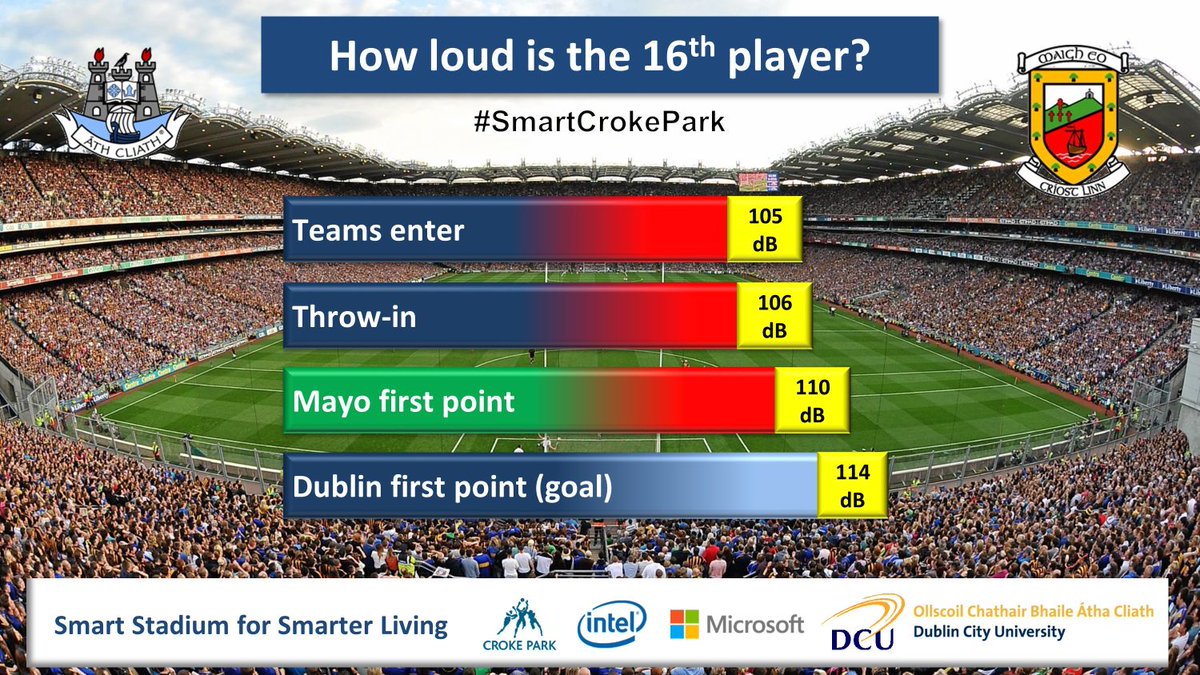
Solution
As well as the business requirements noted above, a number of other functional requirements needed to be considered:
- For sound monitoring, it is important to strategically position microphones within the stadium. To understand noise levels for both crowd cheer and noise pollution level, microphones must be located both within the stadium bowl and externally. For this reason, four microphones were deployed, two on the east side of the stadium and two on the west side. Each side had one microphone inside the stadium and one outside. Outside the stadium, microphone locations were selected in known areas of significant noise leakage due to breaks, such as access corridors, in the concrete bowl infrastructure.
- Keeping in mind that the stadium represents a microcosm of a city, an important requirement for the project was that the team learn how best to deploy an IoT solution and use these learnings to help other companies build their own smart-city solutions. This means carefully architecting solutions so that they can scale when applied to the real world.
Engagement approach and team
One of the challenges in working on the smart stadium project was the various skills sets required, including:
- Sound and weather monitoring specialists. This activity was primarily carried out by Croke Park staff and Sonitus Systems, acting as a specialist sound-monitoring organization.
- Gateway management, including deployment, networking, and development. Intel deployed and managed all gateways within the stadium, with GAA IT staff providing backhaul connectivity to the network and Internet, where required.
- Stadium staff for access control and health and safety monitoring.
- Cloud specialists to handle the ingestion and analysis of collected data. Cloud capabilities were provided by Microsoft.
- Business intelligence and user experience experts who understand and define use cases as well as develop dashboards and user interfaces for displaying the data in effective ways. All BI dashboarding was provided by Microsoft.
- Data scientists to analyze data and develop predictive models to proactively act on intelligence extracted from historical data. Data science work was carried out by a team of research scientists at Dublin City University and Intel.
Technical solution
The technical solution was designed based on the above business, functional, and non-functional requirements. The following table details the components along with the partner responsible for the deployment and operation and notes on how these components satisfied requirements:
Sound monitoring equipment was provided by Sonitus Systems using an early version of our AS180 Sound Level Sensor. Four sound monitoring microphones were positioned around the stadium, 2 internal and 2 external as per stadium map.
In order to capture noise levels throughout the stadium, sound monitoring equipment was positioned at four points—two within the stadium at the stands and two outside the stadium. This allowed us to measure crowd cheer within the stadium but also compare this to external sound to monitor noise pollution for neighboring areas. The following photo shows the position of one of the Sonitus microphones. Sound data is measured by the microphones and averaged over a 1-minute period and then sent to the closest gateway where it is then sent to the cloud via the master gateway.
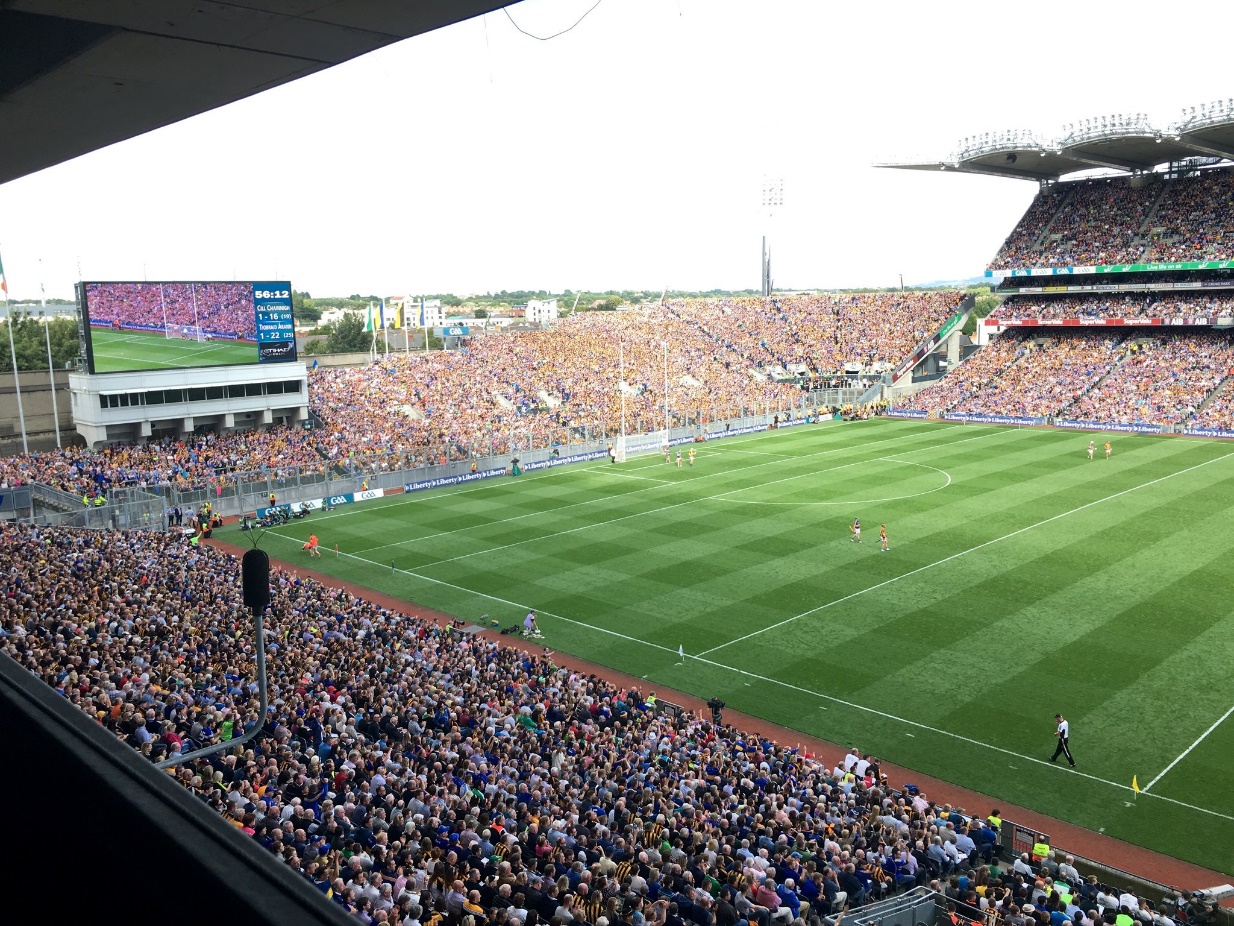
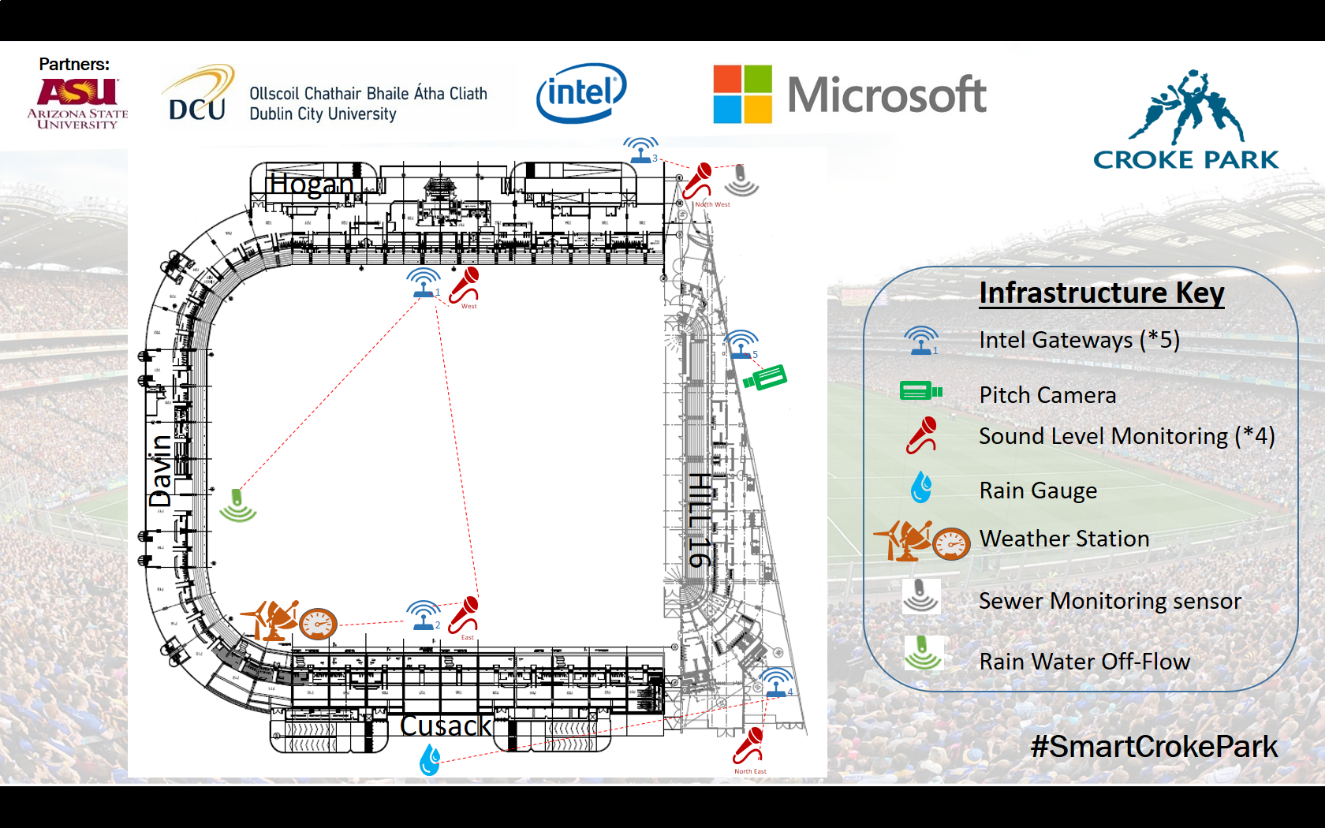
Web dashboard
A simple web dashboard was created to present the data online. The dashboard was built using the MVC framework within Visual Studio 2016 and used Power BI Embedded to embed Power BI dashboards. The Power BI dashboards were built using Power BI Desktop and then uploaded to Microsoft Azure to make them available to the web dashboard. To get started building the dashboard, sample code from the Azure team was used.
Two Power BI reports were created and uploaded to an Azure Power BI workspace. Both reports connect directly to the SQL database described previously and use a number of views to present the following information:
- 15-minute rolling average sound data and maximum spikes for the last 20 minutes, 60 minutes, 2 hours, 1 day, and any specific date to review historical data. This data is represented in a single Power BI data set as tabs; see the following diagram.
- Most recent wind speed data, average wind speed data for the current day, and a time series graph of wind speed for the current day. This graph helps indicate the likelihood of a skyline tour taking place.
The following diagrams show the dashboard interfaces:
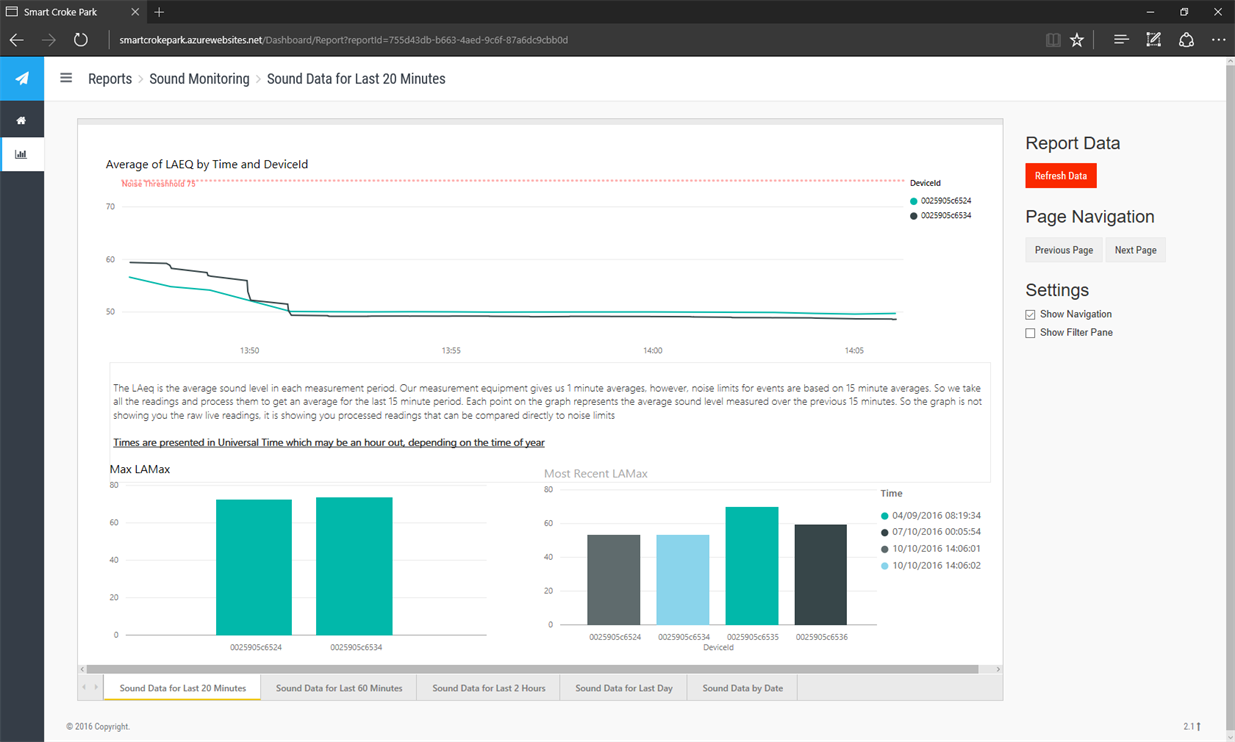
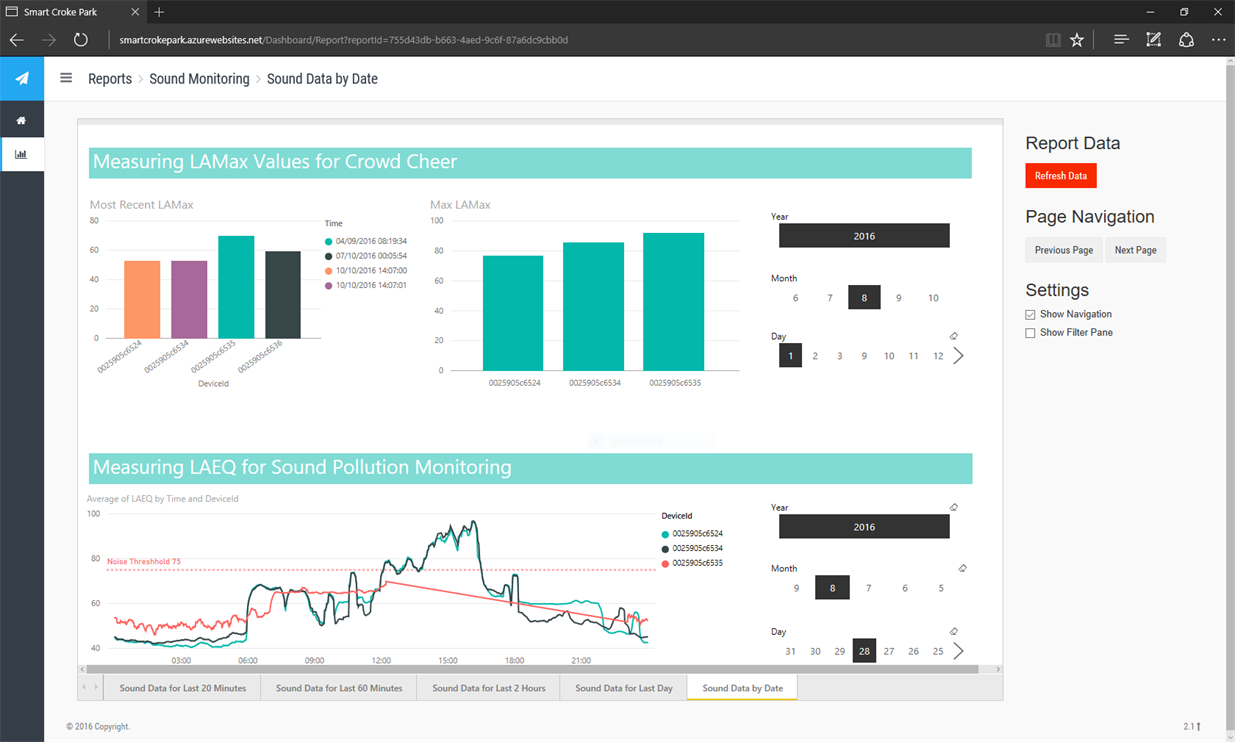
Conclusions
The project engaged with Sonitus Systems, an industrial sound monitoring organization commissioned by Dublin City Council to monitor sound pollution around the city. This proved invaluable in designing the dashboard interfaces and allowed us to prove that collecting the data centrally and sharing this data via the dashboard could greatly improve the productivity of the sound monitoring exercise and at the same time provide a mechanism to compare site measurements against sound pollution regulations in real time and potentially alert sound desk engineers of impending infractions.
Once the solution was ready we engaged with the GAA communications team to implement a fan engagement scenario, the crowd cheer or “the roar of the 16th Player,” during the All-Ireland intercounty football and hurling finals. In addition to engaging the crowd via the big screens in the stadium, this simple scenario saw the GAA get over 25,000 impressions on one single tweet sent during the hurling final alone. This engagement far exceeds anything that was done before and offers real value for the GAA in engaging with their members and fans.
Get in contact to see if we can help with your project.



